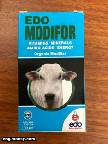
What is Avian Influenza (Al)?
Avian infl uenza (Al), caused by the infl uenza virus Type ‘A’, can affect several species of food producing birds (chickens, turkeys, quails, guinea fowl, etc.), as well as pet birds and wild birds with some strains resulting in high mortality rates. The virus has also been isolated from mammalian species including humans, rats and mice, weasels and ferrets, pigs, cats, tigers and dogs.
Al viruses are not new. There are many descriptions of historical outbreaks of Al in domestic poultry throughout available literature.
There are many strains of Al viruses and generally can be classifi ed into two categories: low pathogenic (LPAI) that typically causes little or no clinical signs in birds and highly pathogenic (HPAI) that can cause severe clinical signs and/or high mortality in birds.
The Asian origin highly pathogenic H5N1 strain of the Al virus has attracted much attention over the last few years because of signifi cant outbreaks globally in domestic and wild birds. Concern is raised because of the degree of virulence not only in poultry but also in
wild birds as well as the ability to infect mammalian species. While Al viruses are generally highly species specifi c, the highly pathogenic H5N1 Al virus has also infected humans. Low pathogenic strains of Al H5N1 virus exist but do not produce signifi cant clinical signs in birds.
Avian infl uenza is a disease listed under the World Organisation for Animal Health (OIE) Terrestrial Animal Health Code. Notifi able avian infl uenza includes two particular subtypes, H5 and H7 that must be reported to the OIE as detailed in the OIE Terrestrial Animal Health Code.
Source: The World Organisation for Animal Health (OIE)



